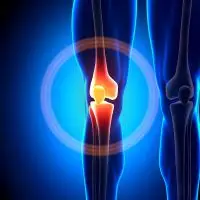Understanding Knee Pain: Causes, Treatment and Prevention
Knee pain affects people of all ages, from active sporty people to those who spend most of their time sat down. It can be dull ache or a sharp, stabbing pain and for many people knee pain can interfere with their daily life. As a physiotherapist, I often see clients struggling with knee pain and while every person’s knee pain and recovery journey is unique, many share common causes and solutions.
Common causes of knee pain:
- Overuse injuries: Repetitive activities like running, cycling, or even standing for long periods can strain the knee. This overuse can lead to conditions like runner’s knee, an irritation of the tendon at the front of the knee cap.
- Trauma or injury: A direct blow or twist of the knee can cause injuries like ligament tears (ACL, MCL), meniscus tears, or fractures. These often happen while playing sport or an accident, such as stepping off a curb.
- Arthritis: Conditions like osteoarthritis or rheumatoid arthritis can lead to knee pain due to degenerative changes in the joint and/or inflammation. Osteoarthritis is common in older adults as the cartilage between the bones breaks down from repeated wear.
- Poor posture and muscle imbalance: Weak muscles at the hips, ankles and around the knee itself can put extra stress on the knee joints, leading to discomfort over time.
How Physiotherapy Helps Knee Pain
Physiotherapy is a highly effective way to treat knee pain, often helping people avoid surgery or long-term use of painkillers. As a physiotherapist I form a treatment plan for each individual depending on the cause of their knee pain, their general health, activity levels and goals or needs of treatment.
Physiotherapy treatment for knee pain generally involves a combination of the following:
- Strengthening exercises: Weak muscles around the knee can put extra strain on the joint. Strengthening these muscles helps to stabilise the knee, reducing pain and preventing future injury.
- Stretching and flexibility exercises: Tight muscles can pull on the knee joint, causing discomfort. Regular stretching of the calves, hamstrings and quads helps improve flexibility and reduces stiffness around the knee.
- Manual therapy: This hands-on approach includes techniques like massage, joint mobilisation and acupuncture, which help reduce pain, improve range of motion and promote healing.
- Posture and gait correction exercises: Exercises and practice drills to correct the way you stand or walk can greatly reduce strain on the knees. I often provide guidance on proper posture and gait to ensure the knees aren’t overworked during day-to-day tasks.
- Taping or bracing: In some cases, a supportive knee brace or taping can offer immediate relief by stabilising the knee or reducing pressure on specific areas. I advise people on which braces and supports might be best for them and apply tape in clinic.
Simple Tips to Prevent Knee Pain
- Stay active: build up exercise training gradually. Regular physical activity is important to keep the knee joint healthy, but avoid overtraining and doing too much too soon. Always listen to your body—if you feel discomfort, take a break. If you are training for an event such as a run or sponsored walk follow a training plan to avoid overuse injuries.
- Warm up before exercise: Warming up helps to increase blood flow to the muscles and prepares your body for movement. Include dynamic stretches and light activities like walking before moving on to more strenuous exercises.
- Strengthen your core and lower body: A strong core and legs help maintain balance and reduce the strain on your knees. Exercises like squats, lunges, and planks can build this strength.
- Wear proper footwear: Wearing supportive shoes, especially during exercise or long periods of standing, can help align your body and reduce knee strain.
- Maintain a healthy weight: Extra body weight puts additional pressure on your knees. Maintaining a healthy weight can help minimise stress on the joints.
Knee pain doesn’t have to control your life. With the right approach, many cases can be successfully managed and even prevented.
If you experience persistent knee pain that doesn’t improve with rest, changing your activity levels and time it’s important to seek help. Book a physiotherapy appointment and I can assess your knee, diagnose the underlying causes of your pain and create a personalised treatment plan to get you back to your regular activities pain free.
Not sure? Why not message or email me (info@clairegurneypilates.com) to arrange a free chat and get some advice on your knee pain and what treatment approach is best.


